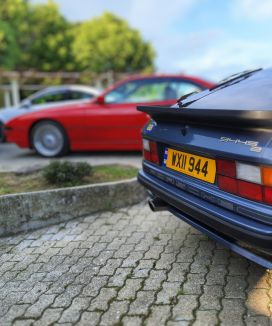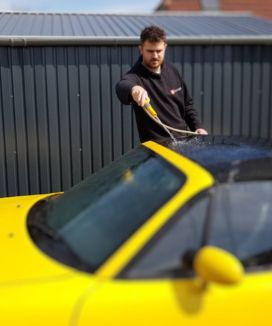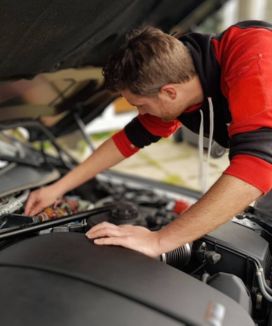How To Keep a Classic Car in Good Condition
Table of Contents
Classic cars are renowned for their beauty, but keeping them in showroom condition requires a high level of attention to detail. The older a car gets, the more protection it needs from the elements, and the more maintenance work it will require.
People who are new to classic car ownership often aren’t aware of the challenges that come with prolonging the life of an older car, but it doesn’t have to be too daunting.
It is possible to keep your classic in great shape without spending too much money. Our list of the eight best tips for keeping a classic car in good condition will help you to do just that.
Keep it garaged
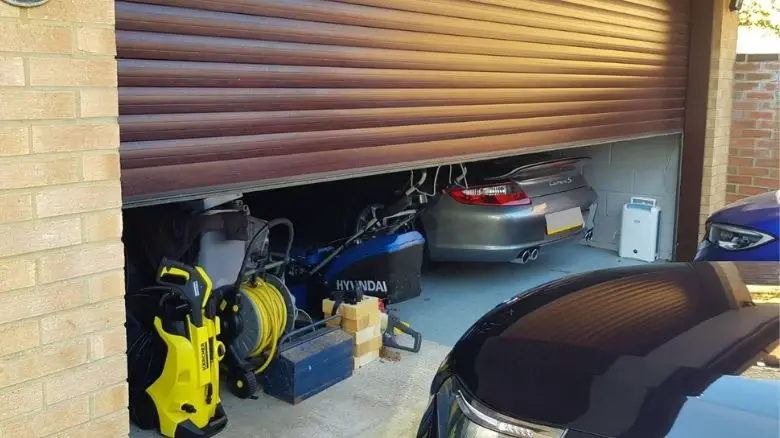
Over time the rain, wind, snow, and even sunlight will degrade a car’s bodywork. Moisture will cause corrosion, and sunlight will cause the paintwork to fade. Keeping your classic car garaged is one of the best ways to protect it from the elements.
Whilst it is possible to own a classic car without a garage for a short period of time, it’s always best to keep older vehicles indoors. Garages offer great protection, and keeping a classic indoors is realistically the only way to prolong its life once it gets to a certain age.
There are still some considerations to be made, especially if you have an unheated garage and experience cold winters.
Insulation, temperature control, and humidity control are all advisable to maintain the perfect environment and prevent rust from forming.
But don’t worry if you don’t have your own garage; many classic car enthusiasts don’t. There are several other options you can consider as either temporary or permanent storage solutions.
Use a car cover
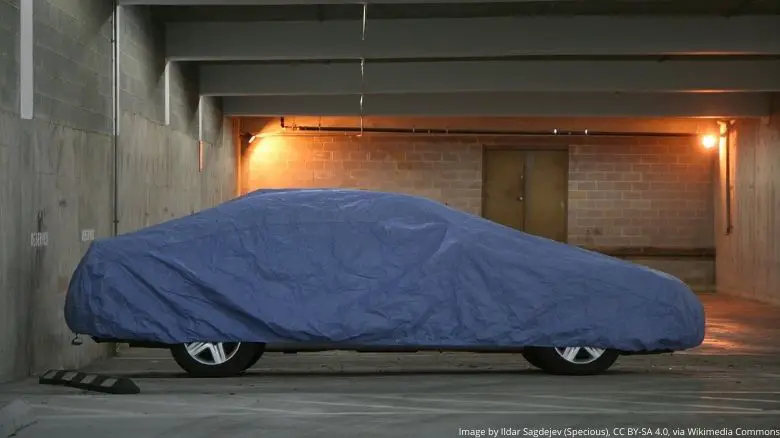
When your car is out of action for extended periods of time, as classic cars often are, it’s advisable to place a cover over it. These covers are readily available, and will prevent dust, dirt, and grime from attaching itself to your pride and joy.
Some companies produce customized covers for popular classic car models, which ensure they fit snugly and all protruding bodywork, such as wing mirrors and spoilers, is suitably protected.
There are specialized covers for indoor and outdoor use, but in our experience outdoor covers can do more harm than good. Moisture can get trapped underneath them, and the wind can cause the cover to rub on the paintwork.
The best combination is to store the car indoors and use an indoor dust cover when the car isn’t in use.
It’s also advisable to avoid cheap covers, as these usually don’t offer the same levels of protection. They can end up damaging the car’s paintwork, and will not last as long as a custom cover. It’s worth spending a little more money to get a high quality cover.
Use a battery conditioner
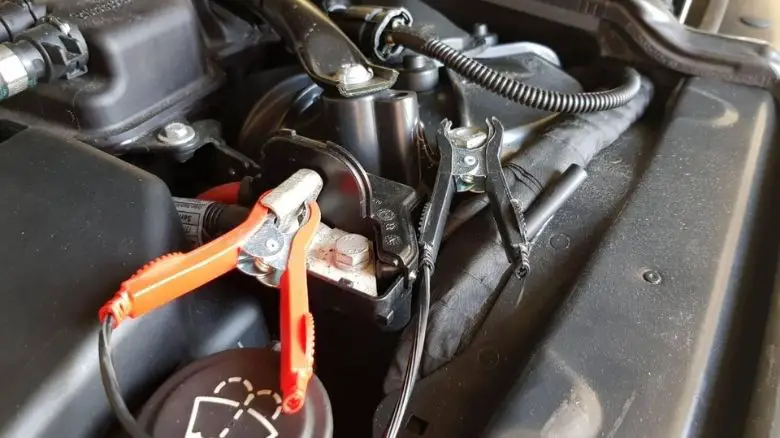
If a car isn’t in use for a period of time, its battery can lose charge and you won’t be able to start the vehicle the next time you need to use it.
It’s worth connecting it up to a battery conditioner or trickle charger if your classic car regularly goes long periods without being used, or only does short journeys.
These are designed to prevent the battery from draining when not in use, which is not only irritating, but can end up being very costly.
Jump-starting a classic can cause damage to the electrical systems, and replacing a car battery isn’t cheap, so prevention is better than cure in this instance.
Here at The Car Investor we keep all of our classics on trickle chargers when they’re not in use, which has saved us plenty of money in replacement batteries over the years.
Whilst you’ll have to invest a small amount of money into a charger, it’s definitely worth it in the long run to keep your battery in top shape.
Stick to the service schedule
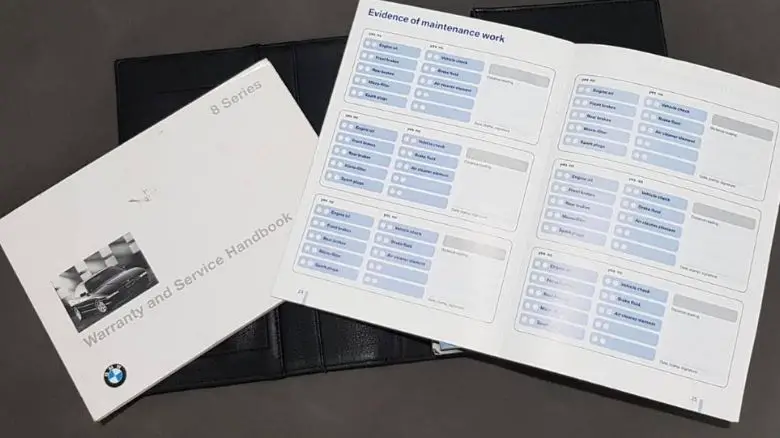
Many classic car owners are tempted to skip servicing and oil changes, particularly if their car hasn’t seen much use. But it’s always best to stick to the manufacturer’s recommended schedules.
Oil changes in particular are very important, as oil can degrade over time. It’s inexpensive to do, and will save you a lot of heartache in the future. Degraded oil can cause all sorts of issues within the engine, which can be very expensive to diagnose and fix.
Many people choose to change the oil themselves rather than paying garage labor charges, which is perfectly fine. Just be sure to keep a record of it so that any future buyers can see you’ve been taking care of your car.
Carry out preventive maintenance
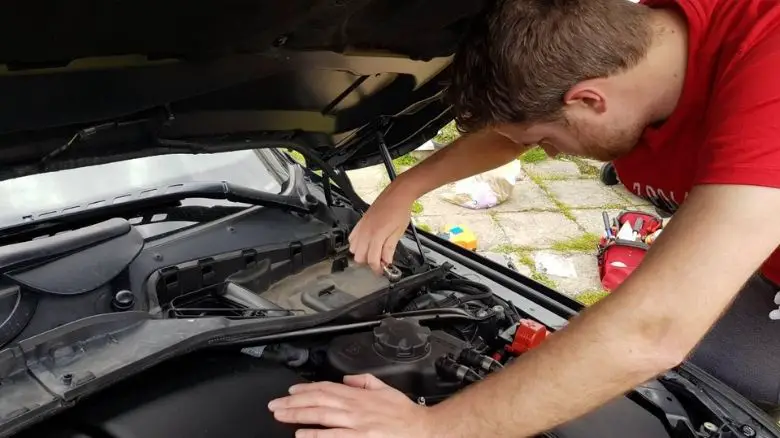
Owning a classic car is very different to owning a modern day vehicle. Maintenance-wise, you shouldn’t just leave it and hope for the best. In between scheduled servicing, you should also be carrying out preventive maintenance.
Preventive maintenance is the art of repairing or replacing parts before they fail. When a part does fail, not only can it cause a breakdown, but it can often lead to further failures.
As you can imagine, these further failures can often be catastrophic, and sometimes lead to irreparable engine damage. It’s far more cost-effective to deal with any potential issues before they arise.
Each car will have its own common faults, so the best way to decide what preventive maintenance you need to do is to research your car’s failure points online.
Generally, a whole host of information can be found on the forums and social media groups specific to your model of car, and there will always be an expert to help you out if you can’t immediately find the answer you’re looking for.
The beauty of owning a classic as your second car is that you can schedule your preventive work and take your time over it, particularly if you aren’t putting much mileage on the clock.
Depending on how confident you are at working on your own car, there are also some jobs you can try yourself. It’s all part of the experience of owning a classic.
Put together a list of the jobs that need to be done, and rank them in order of priority. Those issues that are very common, or can cause significant damage to your vehicle if they’re left unchecked, should be at the top of the list.
We’ve recently bought a BMW E60 M5 here at The Car Investor. It’s a car that has a reputation online for being particularly unreliable, but we argue that with the correct preventive maintenance, it can be a reliable car. Either way, we wanted to carry out the main preventive maintenance work straight away.
The first job we scheduled was a big one, but was definitely worth it. The M5’s V10 engine has a tendency to suffer from rod bearing failure, so we had those changed out immediately. And it’s a good job we did, because without changing them when we did, failure could have written off the entire engine.
Look after the bodywork
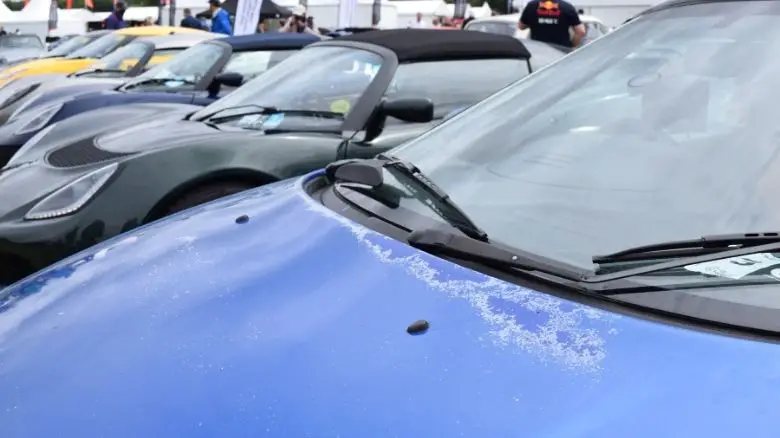
It’s not only the engine that you should be focussing on; great care also needs to be taken with the bodywork and glass.
Once cars reach a certain age, it’s inevitable that they will have some bumps and scrapes, even if only minor. It’s definitely worth dealing with these as they come up to keep your car in pristine condition.
Light scratches can often be easily repaired without any tools, but you may want to consider using a professional to repair deeper scratches.
If the scratch has exposed the metal beneath the paintwork, you’ll need to act quickly to prevent corrosion from setting in.
It’s a similar story with the windshield and windows. If a stone chip appears, it’s best to get it sorted quickly rather than waiting, as this can end up causing more damage.
Stone chips can usually be filled, but if it’s left too long it may develop into a crack in the glass, in which case the whole windshield would need to be replaced.
One area that people often forget about is the rubber seals around the doors and windows of a car. These seals are essential for keeping the elements out, and do deteriorate over time if not cared for properly.
The good news is they’re easy to care for, however. Just buy some rubber care solution, such as Gummi Pflege, and apply it to all rubber seals to prevent them from becoming brittle and cracked.
We apply this solution to all of our cars once every six months, and have found this to be the ideal interval. It’s a quick job, and should only take around 10 minutes. Just make sure you get all the seals!
Clean and wax the car regularly
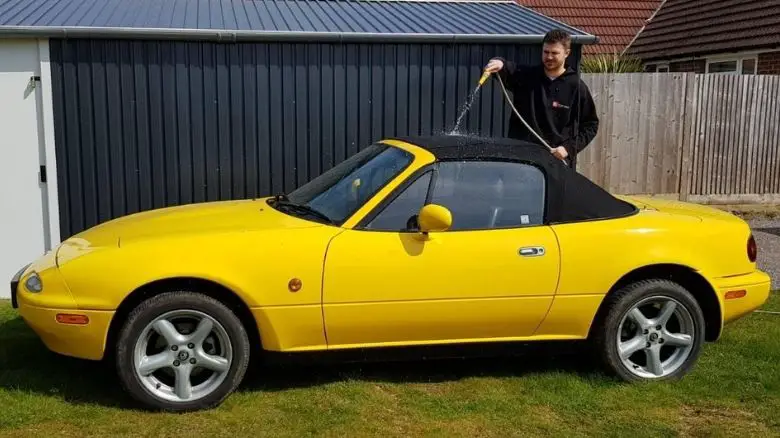
Cleaning and waxing a car not only keeps it looking fresh, but also protects the paintwork from deteriorating over time. It’s one of the easiest things you can do to keep your classic car in the best condition.
As we know, paintwork can fade and bodywork can be affected by dirt and grime build-ups, particularly around the wheel arches and along the sills/rocker panels.
By cleaning the car regularly, you ensure that any build-up of dirt is washed away before trapped moisture can start eating into the car’s metal.
By waxing the car, you’re adding protection to the clear coat. This is the layer that protects the paint from anything that’s likely to cause damage, such as dirt, tree sap, sunlight, and bird droppings.
Whilst owners of modern cars can be excused for taking their cars to the local car wash to save time, it’s not advisable to do that in a classic car. Learning to wash your car properly is essential for any classic car enthusiast.
It also doesn’t hurt to have your car detailed every once in a while. Car detailers are automotive professionals who specialize in returning cars to like-new condition, using a variety of specially designed products and a whole host of industry knowledge.
Car detailing can be expensive, so it’s not something you’ll be able to do too regularly. Perhaps once per year is a good rule of thumb, but it will depend on how much of your budget you’re willing to spend on the bodywork.
Drive the car

This may seem counterintuitive, but driving a classic car regularly helps to keep the fluids flowing, and all the moving parts in good working order. Cars were built to be driven, after all.
If you are going to be using your classic, then it’s advisable to drive it at least once or twice per month. Leaving a car to sit without being driven is a disaster waiting to happen.
If you are planning to keep your car off the road for an extended period of time, that’s fine as well, but you’ll need to make sure you plan ahead and prepare it for storage if this is your choice.
In fact, many people do this to preserve the value of the vehicle and keep the mileage down.
Here at The Car Investor, we prefer to drive our cars as often as possible whilst keeping the mileage down enough to retain and increase their values. A fine balancing act indeed.
Avoid driving on salted roads
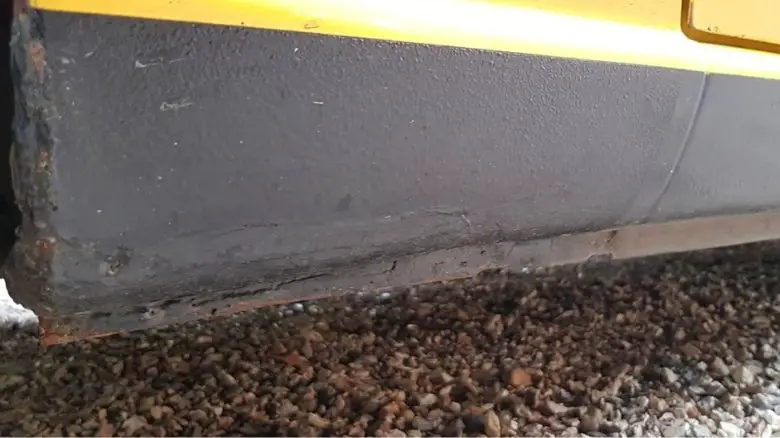
One caveat to the previous point is that you should avoid driving your classic car on salted roads where possible. Salt is the enemy of classic car owners across the world, as it will rapidly cause a build-up of rust.
If you absolutely must take your classic out on salted roads (and sometimes it’s unavoidable), then make sure you clean any salty deposits off the bodywork, wheel arches, sills/rocker panels, and underside of your car after every journey.
Leaving salt to build-up on your vehicle is a one-way ticket to catastrophe, and many older cars have ended up succumbing to this rusty fate over the years.
Of course, in some parts of the world where the climate is warmer this won’t be an issue, but those who experience cold winters should be aware of the dangers salt poses to older vehicles.
Enjoy the experience

The number of things you need to consider to keep your classic car in good condition and preserve its value may seem daunting, but when you own a classic, it becomes a part of your life.
It’s not just taking care of the mechanical issues that crop up; it’s the accomplishment of owning a car from a bygone era. And with that comes great responsibility.
One of the best things you can do is enjoy the experience of owning your classic car. Make it your pride and joy, and you will find yourself enjoying the process of looking after it.
When you dedicate yourself to looking after your car, the satisfaction you get from the ownership experience soon makes you forget the work that’s needed to stay on top of things.
ABOUT THE AUTHOR
Adam Chinn writes about the intersecting worlds of classic cars, driving pleasure, and smart investment strategies. Starting his journey at 26, he’s proven that one doesn’t need to be wealthy to begin investing in classic cars.
Adam’s insights have been recognized on platforms such as MoneyInc, Swagger Magazine, and Top Speed.

